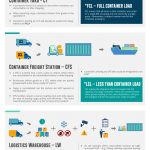Crowdfunding platform, Kickstarter was founded in 2009 and continues to be an exciting and innovative way for entrepreneurs and businesses to connect with their fans, as well as generate much-needed revenue.
The highest-earning campaigns are legendary, with success stories like the ‘Pebble Time’ watch that raised $1 million in less than an hour, before topping out at $20.3 million (3967% of their goal). The team behind ‘The World’s Best Travel Jacket’ had a funding goal of $20,000, but went on to raise $9.2 million.
Of course, not every campaign is a success. As of 2016, there have been 173,873 unsuccessful Kickstarter projects, with 39,564 campaigns receiving 0% funding. So, what separates a flop from a fully-funded triumph? In this article, we discuss 7 common mistakes that businesses make, that often lead to projects being delayed.
- You Started Too Slow
Alon Goren is a co-founder of Crowd Invest Summit – the world’s largest crowdfunding conference and expo. He says “nothing attracts a crowd more than a crowd.” If you want to reach your fundraising target, Goren recommends focusing on raising 30 percent of your total in the first 2-3 days. To the crowdfunding novice, this timeframe can seem daunting! You need to plan your fundraising strategy carefully.
As soon as your campaign begins, you should get your inner circle of supporters (friends, family, die-hard fans) involved and contributing immediately. Why? “You don’t want to be publicly sharing a campaign that has zero amount of money in it,” says Goren. “You have to show there is some traction.”
The more ‘fans’ you can generate before the launch of your campaign, the better. Maybe you can share design details with these early adopters? Or provide them with the opportunity to beta test your product – the more involved and invested they are in your campaign, the more money they will likely donate. So start sharing a ‘coming soon’ landing page, or think about running paid traffic to begin building a backer base ASAP!
- You Failed to Price Your Rewards Correctly
Everyone who pledged to your campaign is owed a reward. Once you’re fully-funded and production is in full-swing, it’s time to start sending out your amazing new goods! But there’s a problem…
Pricing production costs isn’t easy. You might think you just add together the assembly costs, the price of materials and other obvious fees, but have you taken everything into account? What about the price of design changes? Or yield losses, like damaged products that didn’t make it to final assembly? – Problems like these usually mean two (unappealing) options: 1) You pay for the losses out of your bottom line, or 2) You have to delay shipment of your items.
One tactic you may wish to consider is the use of stretch goals – helping you to raise future funding, build more excitement for your project, and offer additional product features.
Example – You are crowdfunding the perfect photochromic glasses with a funding target of $40,000. These glasses darken on exposure to types of sunlight, keeping your eyes protected. As a stretch goal, you tell backers that once you reach $55,000, you’ll introduce options for different coloured lenses, and if you hit $65,000, you’ll add choices for different styles of frames.
This stretch goal benefits your campaign as your product gets more features, backers who want to see these additional features are more likely to approach other people to support you, and, of course, you’ll raise more money.
- Did you Scale Your Prototype?
A large number of crowdfunding creators work on their designs and prototypes in their homes, sheds or garages. You probably sorted everything out yourself, from purchasing supplies to creating your own mold and assembly management.
This kind of workflow is fine for a prototype, but when it’s time to scale your product for mass production, you may suddenly realize your original process won’t work. Involving large suppliers and factories leads to an increase in production time and costs, and your whole project becomes delayed.
When the time comes to switch to mass production, it’s crucial that you personally follow the set up of the mold used for your product, ensuring that everything is correctly calibrated and ready to begin. Once you get the first piece right (and who else knows what’s required better than the creator?) producing thousands of other pieces should be routine.
Tip! – Approximately 80% of all crowdfunded products are produced in China. Communication and cultural challenges, as well as differing expectations on quality, commitment and deadlines can cause major delays. To avoid misunderstandings, you should plan at least a one-week stay at your selected factory to oversee initial production. Your supplier will not refuse this.
- Don’t Leave Your Campaign to ‘Run Itself’
Want to know a secret? Successful Kickstarter projects don’t just materialize out of nowhere, so don’t believe you can simply get a campaign online and it will run itself. Amazing products, like yours, need exposure and marketing. All of the most successful campaigns made an effort to do outreach – either spearheaded by the creators themselves, or by hiring professional marketers. You need to focus on how to utilize the power and reach of influential social media bloggers to raise awareness of your crowdfunding project.
Before you launch your campaign, make sure you’re active on social platforms and communities. Learn how to use SEO, PR, and outreach to generate interest for your campaign, and begin building and growing your company profiles at least three months prior to launch – The bigger, the better!
While there is no denying the influence of key opinion leaders, an important aspect that people often overlook is how busy, popular bloggers are. You can’t expect them to suddenly start talking about your awesome new product if they’ve only just found out about it! Figure out who is most likely to spread the word about your project, compile your target list in advance, start scouting your ideal candidates and connect as best you can to build rapport. Remember; be persistent!
- Don’t Ignore Your Backers
Your early adopters and backers are, by definition, your biggest fans. They are the ones that will be out there in the world, singing your campaign’s praises – so, don’t ignore them! You don’t want to turn goodwill into anger and negativity.
Send regular updates about your campaign – Do this a lot! – Share cool images and videos, company updates and all the latest exciting news about your product. Aim to contact your backers at least a couple of times a month.
If unexpected problems do lead to delays, let your backers know ASAP and be honest and transparent. Crowdfunding supporters will understand and forgive you, but only if your communication with them is excellent. Promptly respond to any messages, comments, and questions to avoid complaints and a mob mentality!
- Did You Promise Too Much?
You’re excited about your campaign, and you can’t wait to introduce the world to your amazing new product – Woo Yeah! This pumped-up attitude is fantastic, except when it means you’re over-promising on what you can deliver.
Remember the golden rule of testing, and check the traction of your ideas before you promise too much – it may seem obvious, but it’s far better to under promise and over deliver!
To avoid delays to your project, start by offering something simple that you know you can produce. Stick to your core features, and if your project is successful, you can expand later. In fact, that should be your overall strategy – plan for a long crowdfunding development, with an increasing number of products. If you get new ideas during your campaign, consider saving them for a future project.
- You Encountered Shipping and Fulfillment Problems
When the time comes to ship your product to all those patient backers, the first step is to export the address details from the crowdfunding site and convert them into a format your shipping software will understand… But what if there’s a problem and you don’t spot it in time?
If you have 50 backers, you can probably handwrite all the address labels, but what about 500, or 5000? The other side of a successful Kickstarter campaign is an increase in the complexity of your shipping logistics!
International shipping issues can be a campaign-killing minefield for the unwary – Many crowdfunding projects use external third-party logistics (3PL) companies to manage fulfillment and shipping.
Tip! – Major crowdfunding platforms like Kickstarter and Indiegogo offer an OMS (Order Management System) to collect critical order information such as name, address, SKU, etc. – When choosing a 3PL provider, make sure they offer a smart API module that easily connects with the OMS, enabling you to fetch whatever order fulfillment details you need, automatically.
Discover how TDS can help you stay on track throughout every stage of your crowdfunding campaign. Speak to one of our expert team today to discuss the most cost-effective and targeted solutions to your company’s logistics needs.







